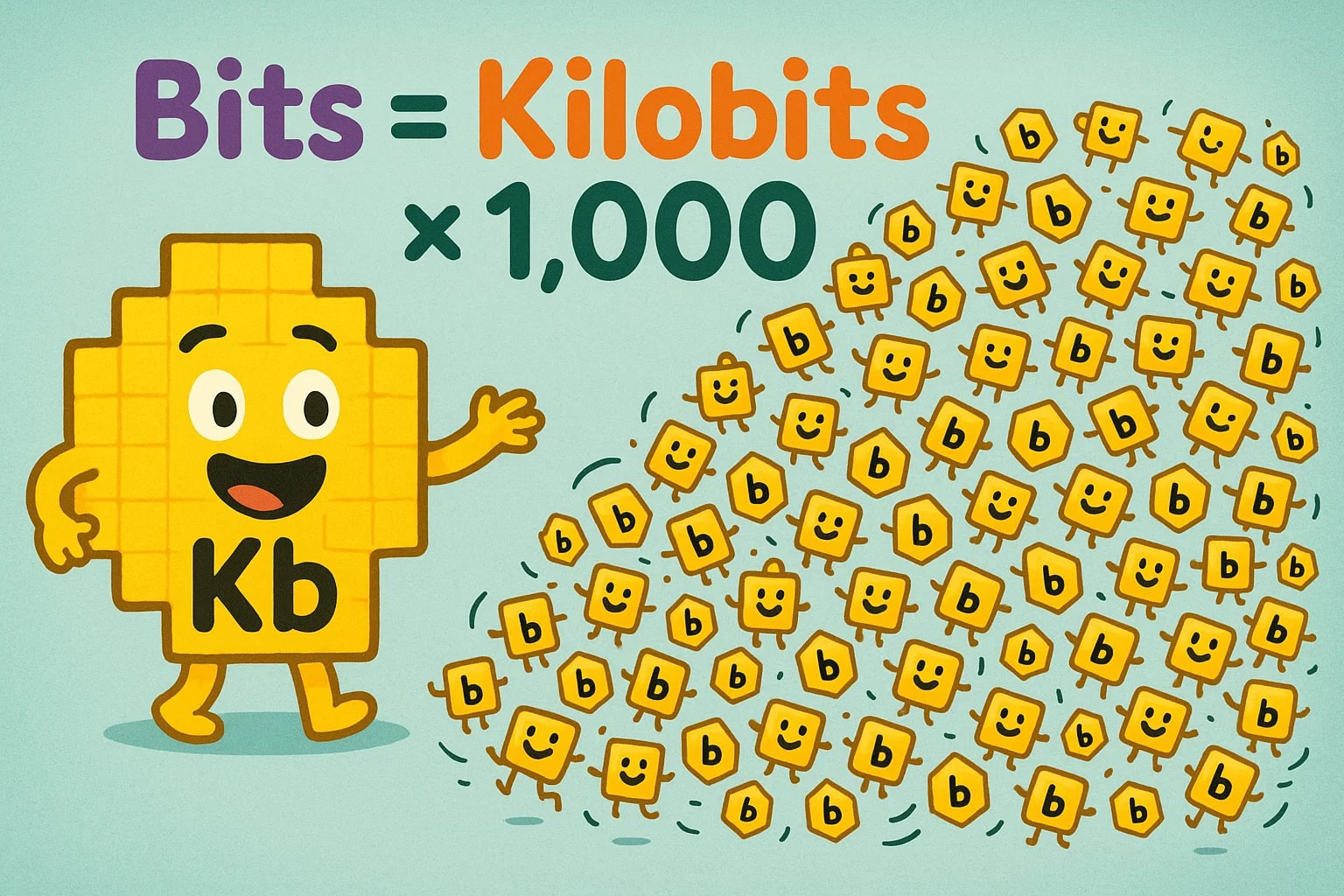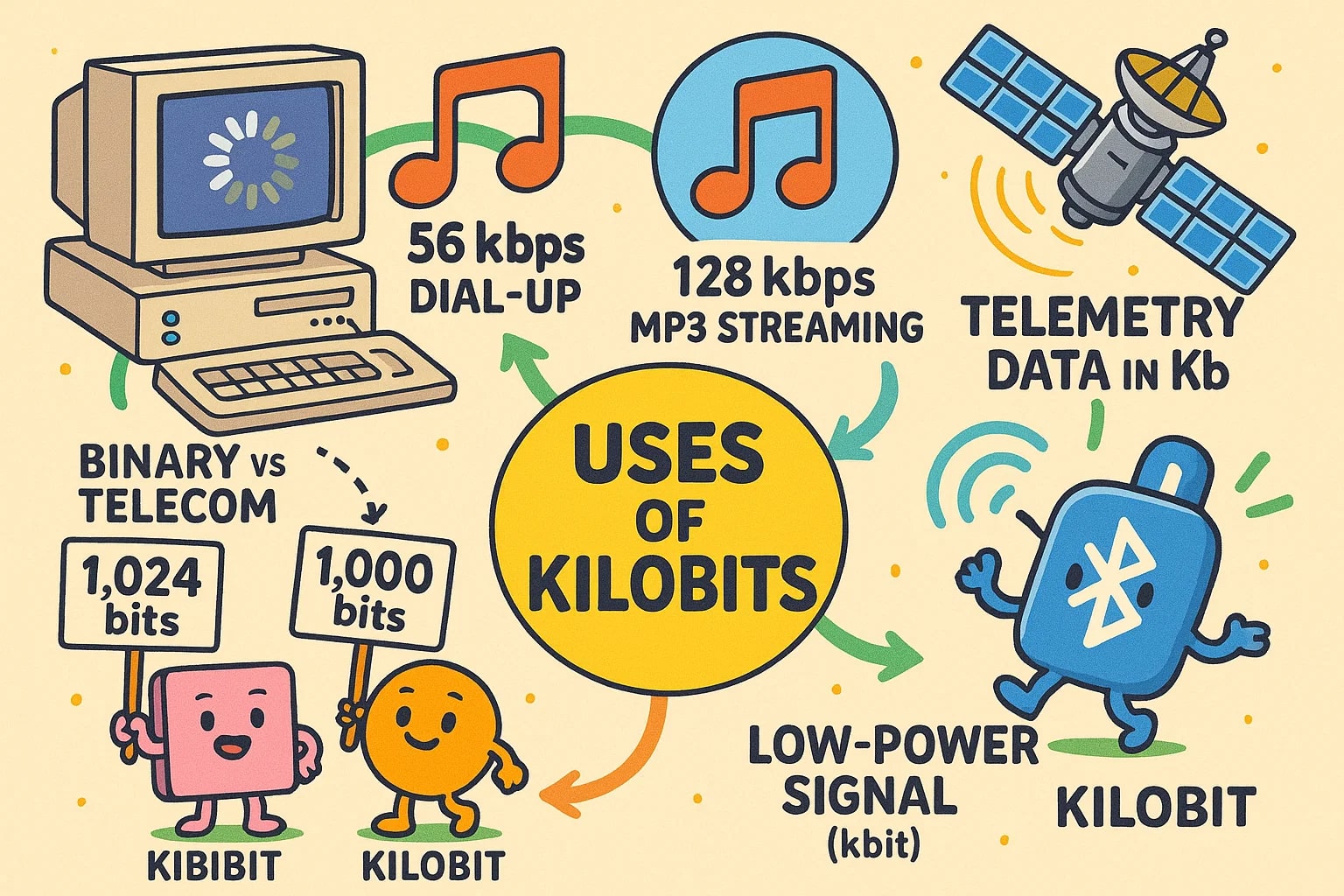kilobit to bit – How to convert kbit to bit
Working with digital data often means juggling between large and small units — and kilobits and bits are two of the most common, especially in networking. Internet speeds, signal bandwidths, and transmission rates are usually measured in kilobits per second, but when it’s time to break things down, everything goes back to the bit.
Whether you're evaluating network speed or configuring a modem, converting kilobits to bits is a quick and essential step.

What is a kilobit (kbit)?
A kilobit is a unit of digital information equal to 1,000 bits. It uses the decimal system (base-10), which is common in data transmission standards.
You’ll often see kilobits used in:
-
Internet speed ratings (e.g., 512 kbps = 512 kilobits per second)
-
Signal bandwidth for audio/video streams
-
Modem and router configuration settings
-
Bluetooth and legacy serial communication
Keep in mind that kbit (kilobit) is different from kB (kilobyte) — bytes are made up of bits, and the case matters.
What is a bit (b)?
A bit is the smallest unit of digital data — a 0 or a 1. Every file, message, or signal is built from bits. They’re used everywhere, from data transmission to hardware processing and memory control.
In networking, all speed measurements ultimately come down to how many bits can be transferred per second.
How to convert kilobit to bit
Since:
1 kilobit = 1,000 bits
The formula is:
bits = kilobits × 1,000
✅ Example: Convert 750 kilobits to bits
bits = 750 × 1,000
bits = 750,000
So, 750 kilobits equals 750,000 bits.
Need a faster way to run the math? Use the Data Storage Converter or check out more digital conversion tools in our full Conversion tools directory.
Did you know?
-
Dial-up modems in the 1990s commonly used speeds like 56 kbps — that’s 56,000 bits per second.
-
Audio streaming (like MP3s) can use bitrates around 128 kbps, which is 128,000 bits every second.
-
Bluetooth Low Energy devices often transmit in kilobits to conserve power and bandwidth.
-
Satellite communication systems measure uplink and downlink rates in kilobits, especially for telemetry and control data.
-
In binary (IEC) systems, some use 1 kibibit = 1,024 bits, but kilobit = 1,000 bits is the standard in telecommunications.

Tiny units, big traffic
In modern communication systems, kilobits may seem small, but they’re still used to describe how efficiently a system transmits information. When you're compressing files, optimizing streaming quality, or configuring networks, converting kilobits to bits helps clarify exactly how much data is on the move.
Just remember:
bits = kilobits × 1,000
You can convert manually, or jump into the Data Storage Converter for a faster result. Want to explore more digital unit conversions? Jetcalculator’s full suite of Conversion tools has everything you need.

